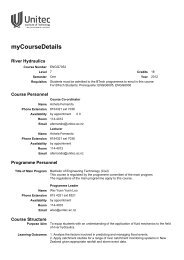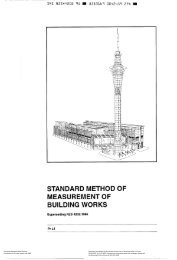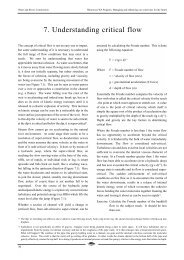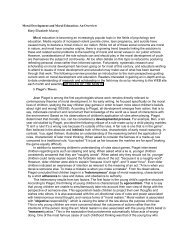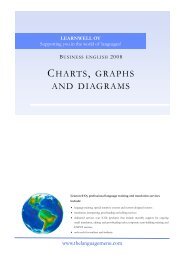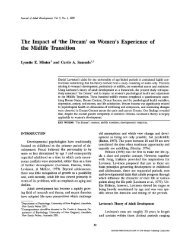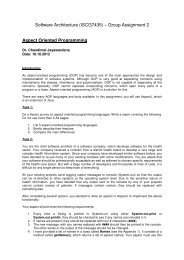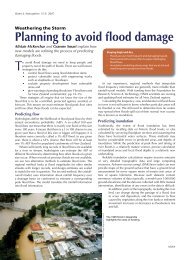WHAT POSTFORMAL THOUGHT IS, AND WHY IT MATTERS
WHAT POSTFORMAL THOUGHT IS, AND WHY IT MATTERS
WHAT POSTFORMAL THOUGHT IS, AND WHY IT MATTERS
Create successful ePaper yourself
Turn your PDF publications into a flip-book with our unique Google optimized e-Paper software.
322 MICHAEL LAMPORT COMMONS <strong>AND</strong> SARA NORA ROSS<br />
successful management require postformal thought. Postformal thought matters<br />
because the concerns and needs of widely disparate systems and their diverse<br />
populations must all be considered if there are to be changes made that are healthy<br />
for all involved.<br />
This article introduces what postformal thought is by discussing the performances<br />
on tasks that can successfully deal with such complexity. The ideas are<br />
expanded via examples that demonstrate how each stage of postformal thought<br />
builds its more complex structure of reasoning. That process of performing tasks<br />
of increasing complexity is done by “standing on the shoulders” of, and coordinating,<br />
tasks performed at the immediately preceding stage. The objective of<br />
the article is to give readers some meaningful bases of comparison for viewing<br />
differences among the four stages of postformal thought. This approach should<br />
illustrate why postformal thought matters and why the differences among its four<br />
stages matter.<br />
The term “postformal” has been used to characterize stages of behavior that<br />
are more advanced in stage than those behaviors found in the most complex<br />
stage discussed by Inhelder and Piaget (1958). Our estimates are that that last<br />
named stage, formal operations, may be characteristic of about 30 to 40 percent<br />
of the adult population in developed countries. In Western developed countries,<br />
some public high school students may use formal thought in some of their course<br />
work or life in general. In college-preparatory courses in both public and private<br />
high schools, some students may employ the first stage of postformal thought. In<br />
developed-country settings, formal stage tasks will be the highest performed by a<br />
significant proportion of adults in business, service, and educational sectors. Our<br />
estimates range up to 70 percent of adults with formal thought as their highest<br />
stage of performance in those sectors. The task demands of many other sectors do<br />
not require postformal complexity (e.g., manual labor, cleaning, transport, clerical<br />
tasks, farm labor). In less developed countries, formal stage task performance<br />
appears in much smaller proportions.<br />
The implication is that postformal thought is performed by a minority of any<br />
population, which we estimate as about 20 percent in the G8 countries (Canada,<br />
France, Germany, Italy, Japan, Russia, the United Kingdom, and the United States).<br />
Much of 21st-century life in a global village actually demands much greater<br />
proportions and distributions of postformal thought because many crucial task<br />
demands exceed the capacities of formal thought. This is rarely recognized. More<br />
often, people assume that everyone can, or should be able to, think the same way.<br />
Some people assume everyone can and should reason with basic logic (e.g., the<br />
if–then of “rational choice”) and that it is enough. This article should disrupt such<br />
assumptions.<br />
THE CONSTRUCTION OF <strong>POSTFORMAL</strong> <strong>THOUGHT</strong><br />
Examples of Tasks’ Orders of Hierarchical Complexity<br />
The general descriptions of orders and their corresponding stages are given in<br />
the preceding article’s introduction to the Model of Hierarchical Complexity.



